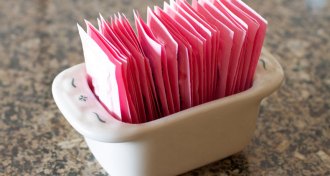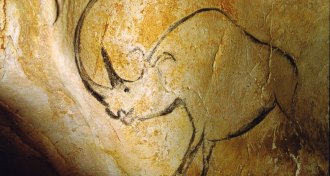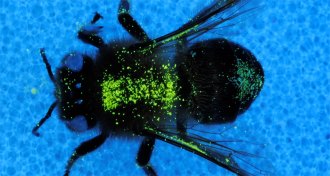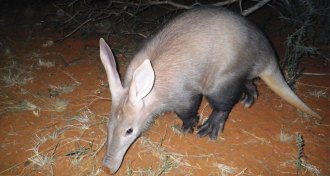Life
Sign up for our newsletter
We summarize the week's scientific breakthroughs every Thursday.
-
 Health & Medicine
Health & MedicineMicrobes hobble a widely used chemo drug
Bacteria associated with cancer cells can inactivate a chemotherapy drug.
-
 Genetics
GeneticsTwo artificial sweeteners together take the bitter out of bittersweet
Some artificial sweeteners are well known for their bitter aftertastes. But saccharin and cyclamate are better together, and now scientists know why.
-
 Paleontology
PaleontologyLike sea stars, ancient echinoderms nibbled with tiny tube feet
An ancient echinoderm fossil preserves evidence of tube feet like those found on today’s sea stars.
-
 Life
LifeWhen a fungus invades the lungs, immune cells can tell it to self-destruct
Immune system resists fungal infection by directing spores to their death.
-
 Neuroscience
NeuroscienceBrain chemical lost in Parkinson’s may contribute to its own demise
A dangerous form of the chemical messenger dopamine causes cellular mayhem in the very nerve cells that make it.
-
 Animals
AnimalsWhy bats crash into windows
Smooth, vertical surfaces may be blind spots for bats and cause some animals to face-plant, study suggests.
-
 Animals
AnimalsWhy bats crash into windows
Smooth, vertical surfaces may be blind spots for bats and cause some animals to face-plant, study suggests.
-
 Paleontology
PaleontologyWoolly rhinos may have grown strange extra ribs before going extinct
Ribs attached to neck bones could have signaled trouble for woolly rhinos, a new study suggests.
By Susan Milius -
 Animals
AnimalsPollen hitches a ride on bees in all the right spots
Flower reproduction depends on the pollen that collects in hard-to-reach spots on bees, a new study shows.
-
 Science & Society
Science & SocietyLearning is a ubiquitous, mysterious phenomenon
Acting Editor in Chief Elizabeth Quill talks about the science of learning and how our brains process new knowledge.
-
 Climate
ClimateRising temperatures threaten heat-tolerant aardvarks
Aardvarks may get a roundabout hit from climate change — less food.
By Susan Milius -
 Health & Medicine
Health & MedicineZika could one day help combat deadly brain cancer
The Zika virus targets cells that cause glioblastoma, an aggressive form of brain cancer, studies in human cells and mice show.